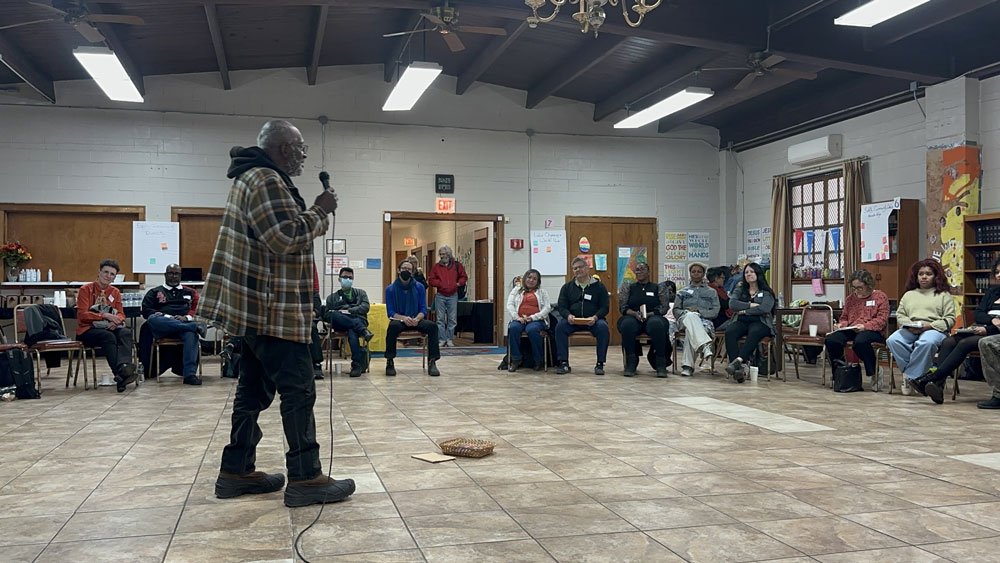
“I am gardening, but I am fully on display. I am being passed by hundreds or thousands of tourists a day who are photographing and maybe telling other people about it and think about how strange it is to have a green space in the middle of the city.” That’s what Carissa Unger, a production farmer, says about her work with Green City Growers, which turns unused urban spaces in the Northeast into farms.
“There’s a lot of real estate that isn’t being used, but not a lot of solid plans for what to do with it.”
Those spaces include empty lots and the rooftops of commercial buildings. One building boasts New England’s largest rooftop farm, on top of a Whole Foods Market in Lynnfield, MA. Another is the farm of Fenway Park, located on the roof of the front office, on the third base side of the ballpark. Fenway Farms donates about a third of its produce and supplies stadium food vendors. With Fenway Farms, Green City Growers holds the title of the Red Sox’s “Other Farm Team.”
Produce aside, there are other positive environmental impacts of Fenway Farms, including improved air quality and keeping stormwater out of city streets. But some urban farms may also address a problem that has rapidly grown since the pandemic: deserted or nearly deserted office buildings. One idea for the increasing number of high rises standing empty? Turning them into farms.
No longer restricted just to the rooftops, some urban farms are spreading roots into buildings themselves.
The Problem of Unused Office Real Estate
In June of 2023, the Atlantic published an article titled “The Next Crisis Will Start with Empty Office Buildings.” According to the article, the vacancy rate of office buildings in the United States is the highest it’s been in decades at over 20 percent—and it’s even higher in some cities like San Francisco and Houston. COVID drove many workers out of their offices; some have still not returned. Less than 50 percent of workers in the nation’s 10 largest business districts are going into the office as of May 2023.
As reported in a 2023 study, more than a quarter of the office buildings in downtown Denver, CO, are currently vacant. “Most office workers enjoy the perks of working from home and are loath to go back to a daily commute, leaving a lot of downtown Denver’s skyscrapers half-empty on any given weekday,” according to Colorado Public Radio. “What’s less clear is exactly what that means for the future of those office buildings. There’s a lot of real estate that isn’t being used, but not a lot of solid plans for what to do with it.”
One answer may be found in nearby Aurora, where a company called Kalera grows lettuce and microgreens inside a nondescript warehouse in an industrial corridor near the highway. With other farms across the globe and plans to harvest about 2.5 million pounds of lettuce in their Colorado building, Kalera is a large-scale farming operation, but smaller, community-based farms are also operating out of unused office or industrial space.
In Washington, DC, Area 2 Farms is a year-round farm inside an old warehouse. The farm, with a community-supported agriculture (CSA) serving the metropolitan region, uses a conveyer belt to rotate plants in an area where the office building vacancy rate was over 18 percent in the first quarter of 2023. Similar urban farms are growing crops in Calgary Tower in Calgary, AB, and in Newark, NJ, where North America’s largest indoor farm is housed inside a former steel mill.
One advantage of moving crops into unused office space is that the buildings don’t require many adjustments for their new lives as farms. These spaces are already ventilated and include air conditioning and heat, all important for crops. According to Smithsonian Magazine, growing systems for indoor farms “can also be easily installed in a wide variety of buildings and settings, which makes it an appealing prospect to potential landlords.”
Robo Bees
These indoor farms are vertical. Their plants are stacked on shelves, and the farms use cultivation methods that don’t depend on soil. Instead, their artificial growing systems can include hydroponics, which uses a water-based nutrient solution to grow plants. Farms in office buildings also can’t rely on the sun to consistently reach their indoor plants so they utilize LED or other lighting systems.
Sign up for our free newsletters
Subscribe to NPQ's newsletters to have our top stories delivered directly to your inbox.
By signing up, you agree to our privacy policy and terms of use, and to receive messages from NPQ and our partners.
They may occupy existing buildings, but indoor farms depend on new, cutting-edge technology to grow their plants. For some farms in the future, that technology may even include robotic pollinators. In other words: robo bees.
One of the current issues with indoor vertical farms: they can only grow certain types of crops.
According to Scientific American, these pollinator drones “carefully disturb the air around them to vibrate flowers when the conditions inside greenhouses (such as temperature and humidity) are optimal for pollination.”
Though they’re being tested in vertical farms, robotic pollinators are primarily used in commercial greenhouses at present, as Siddharth Jadhav, the founder of Polybee, which supplies mini-drones to farms, told Scientific American, because “we do not have many commercial vertical farms that grow fruit crops at scale yet.” Part of this is likely due to the overall cost of vertical farms compared to commercial greenhouses, which come with relatively inexpensive startup costs and are more energy efficient while growing a larger variety of crops.
Limited Types of Produce
That leads to one of the current limitations of indoor vertical farms: they can only grow certain crops.
Lettuce is the crop most commonly grown in vertical farms, along with microgreens and other leafy types of produce. This is because, as research horticulturalist Dr. James Altland told the USDA Agricultural Research Service, vertical farm crops must “be grown hydroponically, have relatively short compact growth forms, and can be harvested in their entirety. For example, lettuce can be harvested in its whole form, as opposed to corn where only the cob is harvested for sale and the rest must be disposed of.”
“The idea we have of what farms used to be is not what farms are today.”
Another challenge: while vertical farms conserve water, using 95 percent less water than traditional farms, they are very energy intensive. As Wired wrote, “All the energy needed to light up those LED bulbs means that vegetables grown on vertical farms can end up having higher CO2 emissions than those grown in open fields and trucked hundreds of miles to their final destination.”
Wired described such energy usage as the “fatal flaw” of vertical farms, but farmers remain hopeful that this challenge can be overcome. Although still rare, alternatives to LED lighting that allow for lower energy usage are being developed; another option is to pair vertical farming with solar or wind generation capacity.
COVID reshaped and continues to reshape the world, and some farmers are willing and ready to adapt, including moving crops into those spaces left empty because of the pandemic. As one of the co-founders of Area 2 Farms told Smithsonian Magazine, “The idea we have of what farms used to be is not what farms are today. There is no picturesque, red-barn farm anymore.”











